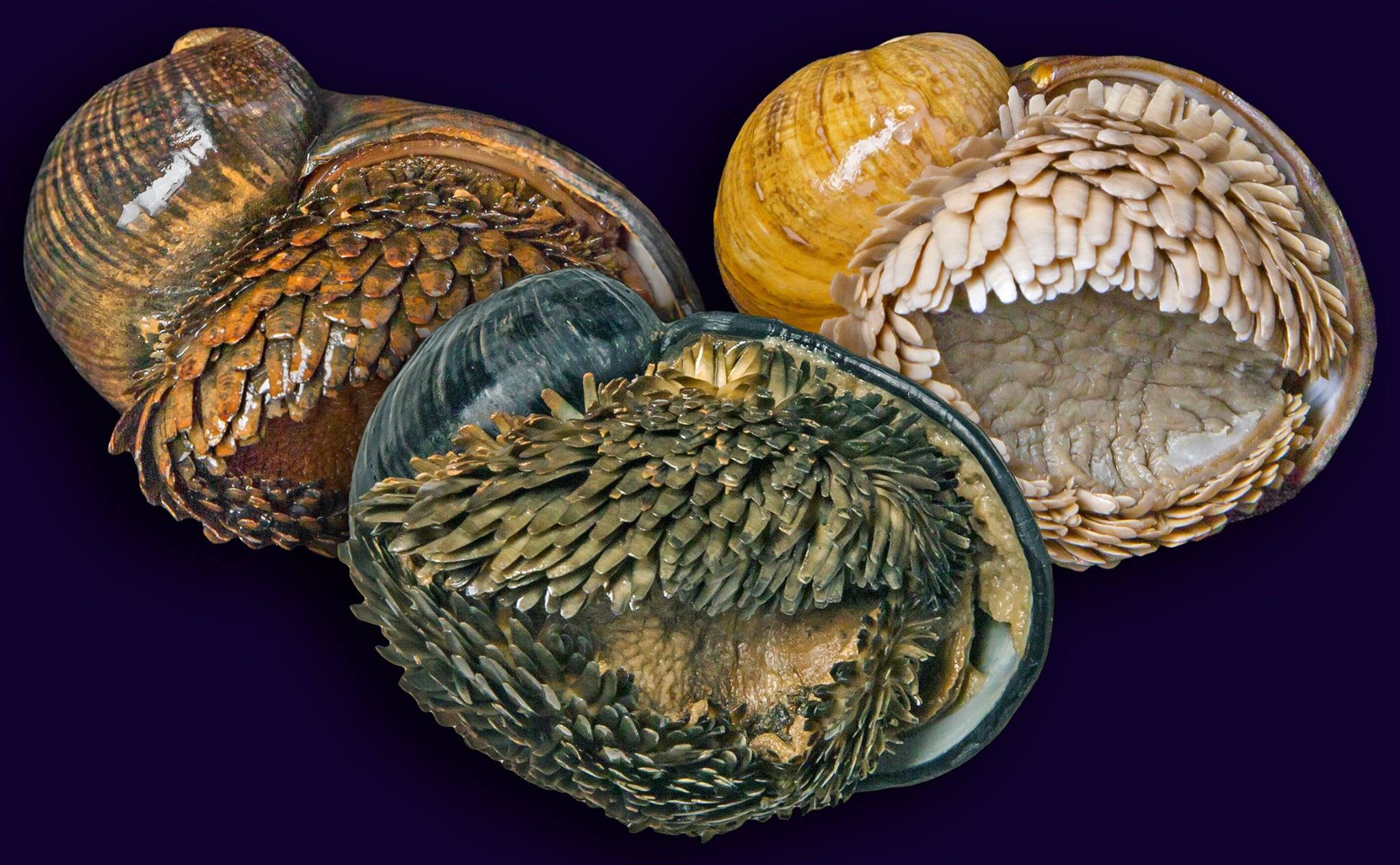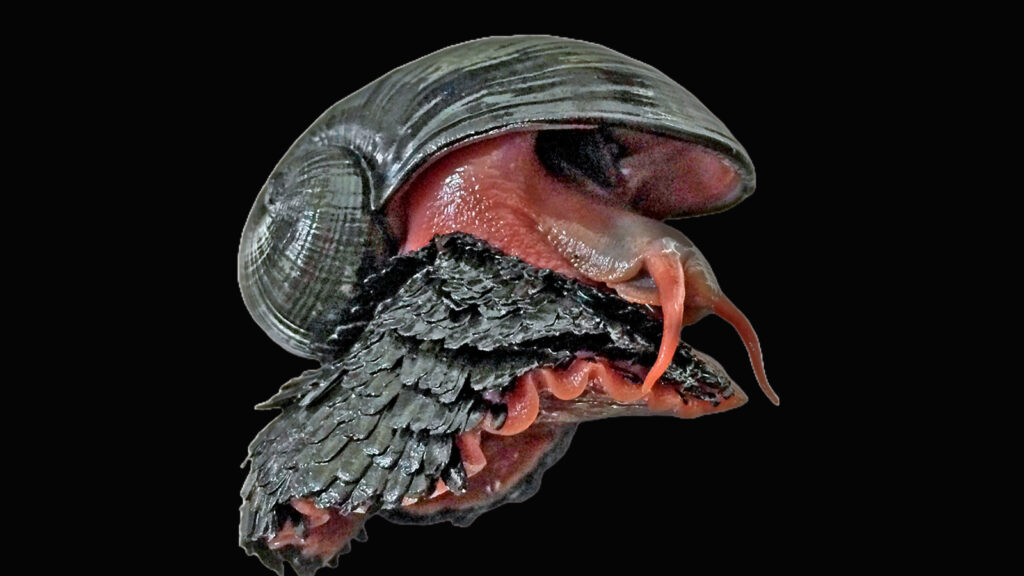QUICK FACTS
Name: Scaly-foot snail (Chrysomallon squamiferum)
Where it lives: Hydrothermal vents on the seafloor of the Indian Ocean
What it eats: As an adult, it doesn’t! All of the snail’s nutrition is generated internally, by endosymbiotic bacteria — microbes that live in the snail’s gut.
The scaly-foot snail, or volcano snail, possesses something unique among gastropods: a coat of protective armor covering its foot, made from hundreds of overlapping iron-infused scales. It fortifies these scales with minerals absorbed from the hot liquid spewed by hydrothermal vents and black smoker chimneys at the bottom of the Indian Ocean, where water can reach temperatures of 752 degrees Fahrenheit (400 degrees Celsius).
Related: Elusive colossal squid finally caught on camera 100 years after discovery in world 1st footage
Within the snail’s scales, sulfur reacts with iron ions to form iron sulfide nanoparticles. Further toughening the snail’s defenses is an outer layer of iron sulfide in its shell, making it the only known multicellular animal to strengthen its skeleton with iron. When the National Museum of Wales acquired a pair of specimens in 2015, curators were told to avoid using any water in the preservative solution, because otherwise the snails would start to rust.
Underneath all that armor, the scaly-foot snail has a big heart — the largest in the Animal Kingdom relative to the animal’s size — making up about 4% of the volume of its entire body. In waters where oxygen levels are low, that enormous heart also supplies oxygen to the symbiotic bacteria that live in the snail’s esophageal gland and act as a built-in food factory. The snails, whose shells measure about 2 inches (5 centimeters) in length on average, are sometimes called “sea pangolins” for their resemblance to the armor-plated land mammal.
Individuals have both male and female sex organs. They creep along the ocean bottom at depths of approximately 1.7 miles (2,780 meters), and are known from just three hydrothermal vent fields to the east of Mauritius, an island off the southeastern coast of Africa.

While the snails’ potential habitat adds up to around 0.1 square miles (0.3 square kilometers), the range where they are currently found covers just 0.008 square miles (0.02 sq km). But even this tiny sliver of the deep ocean is becoming unsafe for the snails, due to human activity.
In 2019, the International Union for Conservation of Nature (IUCN) added scaly-foot snails to its Red List of life at risk of extinction. The snails became the first animal to be listed as “endangered” due to threats to two of its three habitat locations from deep sea mining.
